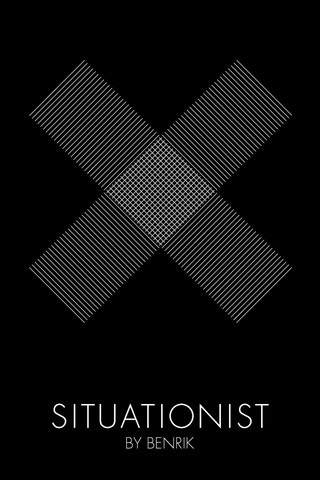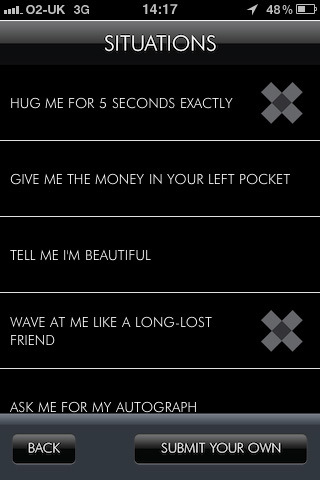Sticky Postings
All 242 fabric | rblg updated tags | #fabric|ch #wandering #reading
By fabric | ch
-----
As we continue to lack a decent search engine on this blog and as we don't use a "tag cloud" ... This post could help navigate through the updated content on | rblg (as of 09.2023), via all its tags!
FIND BELOW ALL THE TAGS THAT CAN BE USED TO NAVIGATE IN THE CONTENTS OF | RBLG BLOG:
(to be seen just below if you're navigating on the blog's html pages or here for rss readers)
--
Note that we had to hit the "pause" button on our reblogging activities a while ago (mainly because we ran out of time, but also because we received complaints from a major image stock company about some images that were displayed on | rblg, an activity that we felt was still "fair use" - we've never made any money or advertised on this site).
Nevertheless, we continue to publish from time to time information on the activities of fabric | ch, or content directly related to its work (documentation).
Saturday, August 02. 2014
This secret swimming pool in the Mojave desert could be all yours... | #gps
Note: in the end... it's time for me (too) to turn off my screens for a couple of weeks and maybe go look for this swimming pool! "Subjective collections of ..." and myself will be back in early September.
Via Archinect
-----
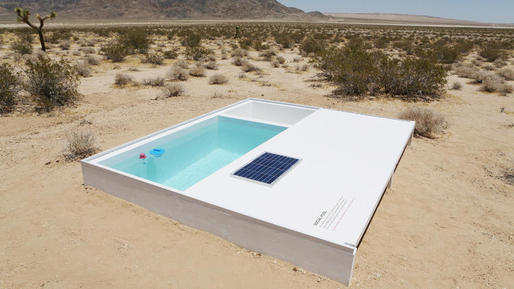
The piece was completed last Friday and it consists of a single, diminutive swimming pool located somewhere in the southern Mojave Desert between Joshua Tree and Apple Valley. The public is allowed to use the pool, but in order to do so visitors need the key that unlocks it (it is kept covered) as well as the GPS coordinates. Only once you have the key, which is kept at the MAK Center, are you given the coordinates.
Tuesday, October 15. 2013
Occupy.here: A tiny, self-contained darknet
Via Rhizome
-----
Ed. — Occupy.here was supported by Rhizome as part of its 2012 Commissions program, and also received a commission from Triple Canopy in 2013. The project's new website launched yesterday.
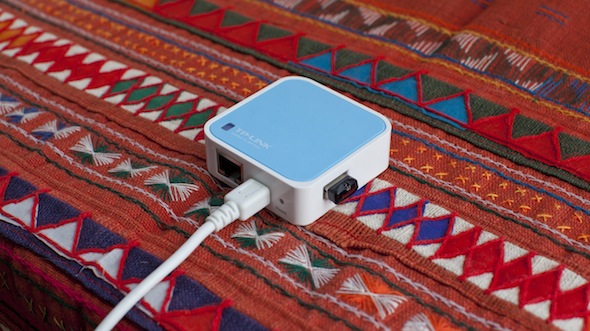
Regardless of your feelings about Occupy Wall Street, we can all agree that its genesis was unlikely, to say the least. It appeared, seemingly out of nowhere, in New York's Financial District (of all places). And it continued to exist only because of a lucky break: basing the protests in Zuccotti Park, formerly Liberty Plaza Park, was a fallback plan, following a failed attempt to protest in front of the New York Stock Exchange. It was the unusual rules for Zuccotti—as a Privately Owned Public Space (POPS), it is not bound by the normal city parks curfew, and is required by charter to stay open 24 hours a day—that enabled the encampments to get a foothold. This may have been a lucky break, but one that was earned through years of organizing, cultivating the expertise and tools and networks that allow a movement to grow and sustain itself.
Occupy.here began two years ago as an experiment for the encampment at Zuccotti Park. It was a wifi router hacked to run OpenWrt Linux (an operating system mostly used for computer networking) and a small "captive portal" website. When users joined the wifi network and attempted to load any URL, they were redirected to http://occupy.here. The web software offered up a simple BBS-style message board providing its users with a space to share messages and files.
Unlike most wifi connections, this one wouldn't let you check your Facebook. It was designed to run entirely disconnected from the internet. Only people physically close enough to the router can could reach the local web forum with their mobile phone or laptop. I imagined it becoming a kind of intranet for Occupiers, filtering users by proximity to specifically support the people at the park.
During the Occupation, I was getting up extra early to visit the park on weekdays before work. I'd chat with whoever was awake and hear what was going on with the upcoming General Assembly, or who'd been making a ruckus the night before. When I described my strange wifi project, I was surprised at the encouraging reactions I got. "That's awesome, you should do it!" or "we were talking about building something like that—does it handle video?"
So I showed up one morning and left my first prototype with the volunteers at the Info desk. Just keeping the router powered consistently was a big challenge; I'd plug it into whichever diesel generator I could find running in the park. After the park was cleared, I refocused my thinking about how best to support a decentralized movement. Since then Occupy.here has become my zen garden, a tiny self-contained internet I've been developing slowly and methodically.
This past Spring, I began stashing wifi routers wherever I could find an electrical plug near a freely accessible space. For a few months, a friend hosted an Occupy.here router from his studio at the Lower Manhattan Cultural Council residency in the One Liberty Plaza building. His 12th floor window looked down right onto Zuccotti Park, close enough to get two out of three bars of wifi coverage in the park.
In this second, decentralized phase, I've seen a modest volume of use by internet standards, perhaps a handful of posts per week. There are patterns in how it gets used according to where the router is situated. The Zuccotti Park router was a popular venue for middle-aged men to upload selfies. Another one, hidden in the lobby of the Museum of Modern Art (installed without permission), mostly receives multi-lingual variations on "hello world" or "why doesn't the wifi work?" A handful of users have written more substantially, but it amounts to a message in a bottle, floating in the 2.4 Ghz spectrum.
It's been exciting to see Occupy.here used "in the wild," but it also has some shortcomings—its lack of visibility makes discovering the network difficult, and the slim likelihood that a user will return makes conversations difficult to achieve. As a growing digital library, the project can surely offer an alternative to "junk food media," but building a slow web movement is not enough. I'd like for the project to be fun to use, but ultimately I'm interested in fostering conditions that might credibly challenge the status quo.
I need to destroy the zen garden and replace it with something more like a town square. Less tidy, more communal. I would like to create something you would want to use every day to share with people whose opinions matter to you. I'm interested in finding collaborators who have a stake in its development. It's becoming clear that, collectively, we all need online spaces that aren't undermined by the surveillance state.
Whether or not the big tent incarnation of Occupy has a future, the 99% are just as dissatisfied as we were in 2011. Much like Napster gave us a taste of what a digital commons could be, Occupy showed us how massively distributed activism can materialize seemingly overnight. It's time to put in the hard work organizing for the next Occupy, to create the right conditions for a lucky break.
On Sunday October 6th I'll be participating in the PRISM Breakup event at Eyebeam. I'll be conducting a hands-on workshop as 12:30pm, followed by a talk later in the afternoon. Please come with radical ideas, and bring a laptop!
Tuesday, March 29. 2011
Does Bilbao need another Guggenheim?
-----
Posted by John Thackara at March 27, 2011 04:38 PM
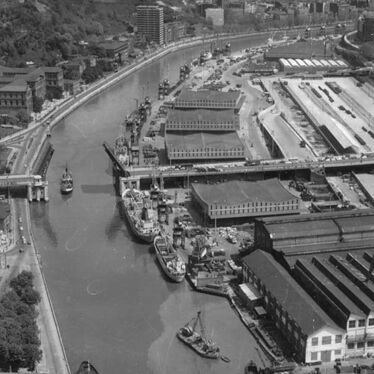
The Basque city of Bilbao was a pioneer in Europe in the use of showcase cultural buildings as a trigger for urban regeneration. Just a generation ago the city's waterfront was an industrial port. Today, in addition to the Guggenheim itself, its architectural landmarks include bridges by Santiago Calatrava and Daniel Buren, and an apartment block by Arata Isozaki.
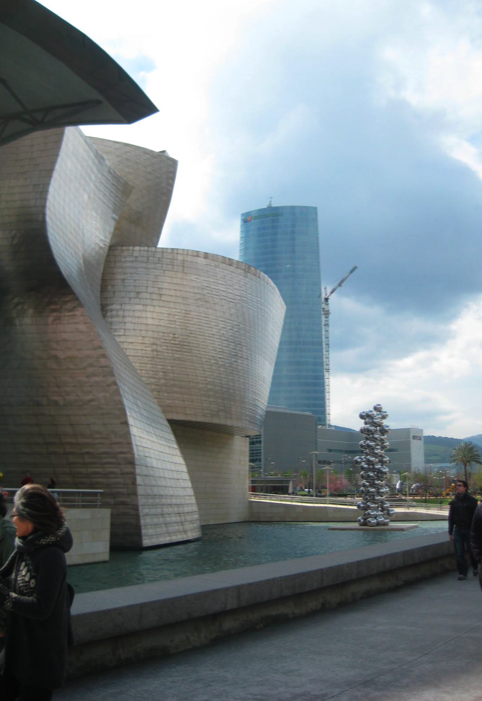
But as with Japan, where the technique was invented [landmark structures were called 'antenna buildings' during their bubble economy of the 1980s] the global crisis finds Bilbao asking: now what do we do?
As things stand, the region is still committed to a new "thrust for modernization." Bilbao's strategy, shaped with input from Global Business Network, is to become a "city for innovation and knowledge". There is talk of re-branding Bilbao as Euskal Hiria, a 'poly-centered global city' that would encompass the Donostia-San Sebastian, Bilbao, Vitoria-Gasteiz as single geographical-economic entity.
Positioned as a hub linking the north of Europe to the South, the idea is that Euskal Hiria would attract an army of highly-paid lawyers, financial and marketing consultants, and iPad-toting creative professionals of all kinds. These knowledge workers, the strategy implies, would snap up the expensive apartments that now lie empty along Bilbao's waterfront.
For all this to happen, Euskal Hiria would need a symbolic edifice to represent this Basque Global City to the world in the way that the Guggenheim does for Bilbao.
The scenario confronts two obstacles.
The first is that buildings conceived as icons, spectacles, or tourism destinations have fallen victim to the law of diminishing returns. Bilbao's Guggenheim is now one among hundreds of me-too cultural buildings around the world. As their number has grown, their capacity to attract attention, or differentiate their host city, has declined. Spoiled consumer-travelers are liable to lunch in the café, buy the t-shirt, and move on. That's not a great return on all the time, work and money needed to bring these totemic edifices about.
The second objection to the Euskal Hiria strategy, and Guggenheim 2 as its emblem, is that they would stand for the high entropy economic model that caused the global crisis in the first place - and that is now dying.
If the iconic cultural building as a catalyst of development has run its course, and the Real Estate Industrial Complex is gone forever, is there an alternative?
A conference in Bilbao last week, oganized by Fernando Golvano and Xabier Laka, challenged speakers to propose new models of development based on more artful and sustainable uses of the region's social, landscape and natural assets
My contribution was to say that a bioregion - more than a high-entropy 'knowledge hub' preoccupied with abstraction - could be the ideal basis on which to re-imagine the future development of the Basque Country. At the scale of the city-region, a bioregional approach re-imagines the man-made world as being one element among a complex of interacting, co-dependent ecologies: energy, water, food, production, and information.
The beauty of this approach is that it engages with the next economy, not the dying one we have now. Its core value is stewardship, not perpetual growth. It focuses on service and social innovation, not on the outputs of extractive industries. Being unique to its place, it fosters infinite diversity.
The idea of a bioregion also changes the ways we think about the cities we have now. It triggers people to seek practical ways to re-connect with the soils, trees, animals, landscapes, energy systems, water, and energy sources on which all life depends. It re-imagines the urban landscape itself an ecology with the potential to support us.
A bioregion is literally and etymologically a "life-place" - a unique region, in the words of American writer Robert Thayer, that is "definable by natural (rather than political) boundaries with a geographic, climatic, hydrological, and ecological character capable of supporting unique human and nonhuman living communities".
A growing worldwide movement is looking at the idea of development through this fresh lens. Sensible to the value of natural and social ecologies, groups and communities are searching for ways to preserve, steward and restore assets that already exist - so-called net present assets - rather than thinking first about extracting raw materials to make new iconic buildings from scratch.
One idea already floated in the Basque region is to locate a Guggenheim-type facility in the Biosphere Reserve of Urdaibai.
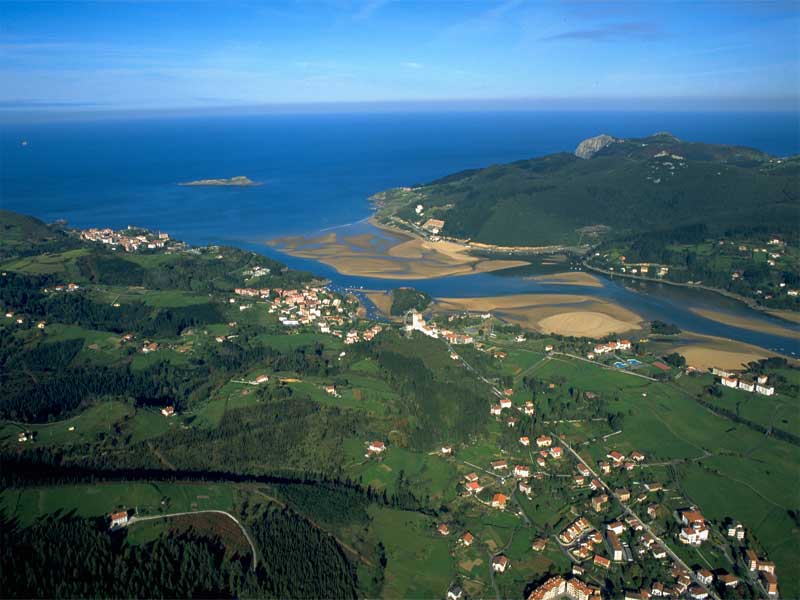
This spectacular salt marsh and coastal landscape on the Bay of Biscay coast covers an area of 220 km2 and contains only 45.000 inhabitants.
My response, at the conference, was that a 'pure' piece of nature, such as Urdaibai, is not the ideal starting point for a new regional narrative. It would reinforce a myth that sustainable development involves returning to pure and unsullied nature. A better priority, I proposed, is to focus on ways to restore and enhance the flows and ecologies of city and countryside.
A number of artists in the Basque region, it turns out, are already exploring this approach. In a variety of ways, they are engaging citizens in new kinds of conversations and encounters whose outcome is transform the territory - but indirectly.
Maider Lopez for example, invited citizens to create a traffic jam on the sides of mount aralar where normally traffic is light. More than 400 people in 160 cars responded to the invitation. For five hours of a mid-September day participants clogged up the winding roads of the the Aralar Mountains in a variety of artful ways.
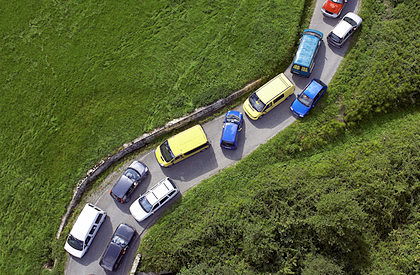
Lopez, who describes her work as 'a poetic approach to community engagement in daily life', told us her traffic jam was to get people thinking about the automobile’s impact on the landscape - only to do so without telling what to think or do about it.
Another artist, Ricardo Anton, presented a project about trash. His approach was to use subtle signs and signals - such as framing dumping site blackspots with CSI-like striped tape.
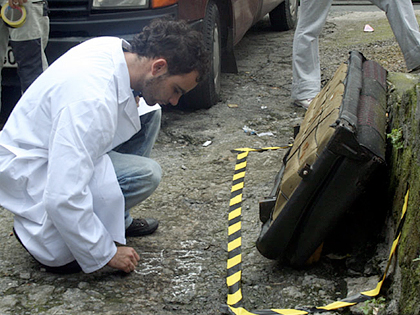
Anton explained that these kinds of projects 'create new spaces for encounters in an ever changing territory of relationships'. They are a variety of what he called 'micro-politics' that in his experience are more effective than telling citizens what to do, or how to behave.
Saioa Olmo Alonso described an enchanting project in the abandoned Bizkaia Theme Park that closed in 1990.
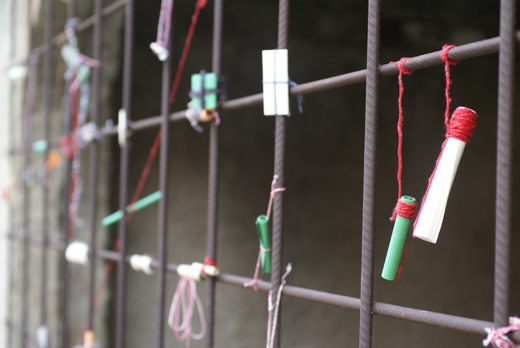
Seventeen years after closing its doors, the original Ghost Train, Octopus and Crazy Worm were gradually being overgrown. Alonso invited groups of citizens to imagine new possibilities for an area once dedicated to fun and entertainment. These light-touch encounters create what Alonso calls 'micro-utopias'...whose positive energy complements the formal planned features of a town's development.
In Bilbao I also caught up with Asier Perez, from Funky Projects. Asier had wowed a Doors of Perception event in 2004 with his presentation about cactus ice cream as a communication tool - so I was keen to get an update.
Combining artful interventions and service innovation, Funky Projects' portfolio now includes service design for Telefonica and Pepsico, as well as many projects for government and third sector on social innovation and the development of new kinds of tourism services. Funky projects are developing strategies for the Gorbeialdea region - Euskadi's 'green heart' - where local authorities developed the idea of being a shepherd for a day or listening to animals sounds by night.
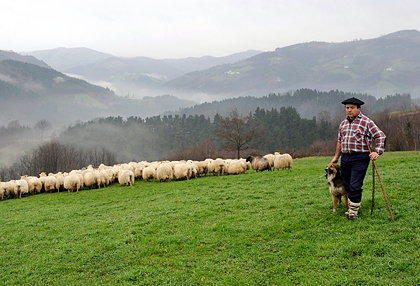
The work of these artists and designers anticipates a new approach to regional development. With the bioregion as their canvas, they are helping different kinds of groups and communities imagine new uses for the places and contexts that surround them.
They are not alone. A new kind of economy - a restorative economy - is emerging in a million grassroots projects and experiments all over the world. The better-known examples have names like Post-Carbon Cities, or Transition Towns. The movement includes people who are restoring ecosystems and watersheds. Their number includes dam removers, wetland restorers and rainwater rescuers. The movement is visible wherever people are growing food in cities, or turning school backyards into edible gardens. Many people in this movement are recycling buildings in downtowns and suburbs, favelas and slums.
Thousands of groups, tens of thousands of experiments. For every daily life-support system that is unsustainable now — food, health, shelter and clothing - alternatives are being innovated. What they have in common is that they are creating value without destroying natural and human assets. The keyword here is social innovation - and the creation of social goods - because this movement is about groups of people innovating together, not lone inventors.
Listening to the artists' stories in Bilbao, however, I reflected that it would be hard work to sell these kinds of project to policymakers and development professionals. In their world, ideas are the easy part. What's hard is getting disparate actors to collaborate.
In that respect, iconic building projects can be an effective way to focus and galvanise the energies of disparate stakeholders.
But if shiny new cultural buildings are a thing of the past, could a new kind of icon take their place?
Someone suggested that perhaps Urdaibai should be host to something like the Eden Project:
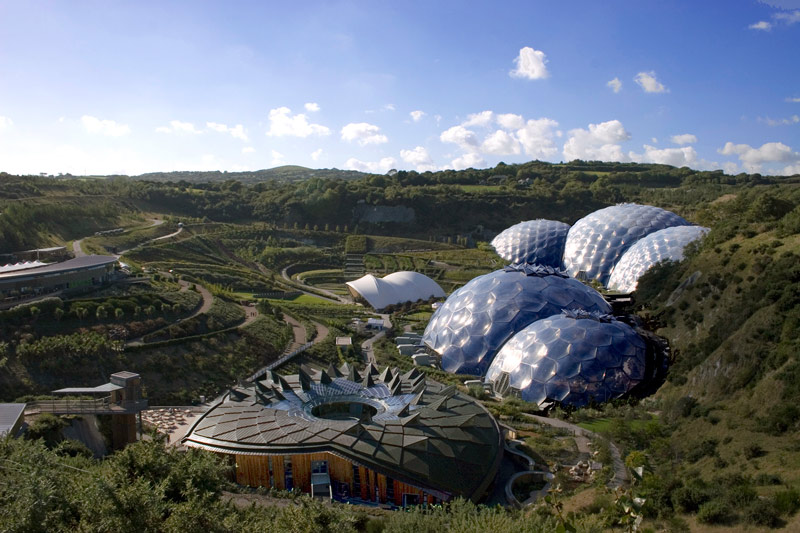
The drawback with this idea is that Cornwall already has the original Eden Project - so why copy the same, only 10 years later?
At this point, as if by fate, Xabier Laka, one of the organizers, mentioned the Lemoniz Nuclear Power Plant.
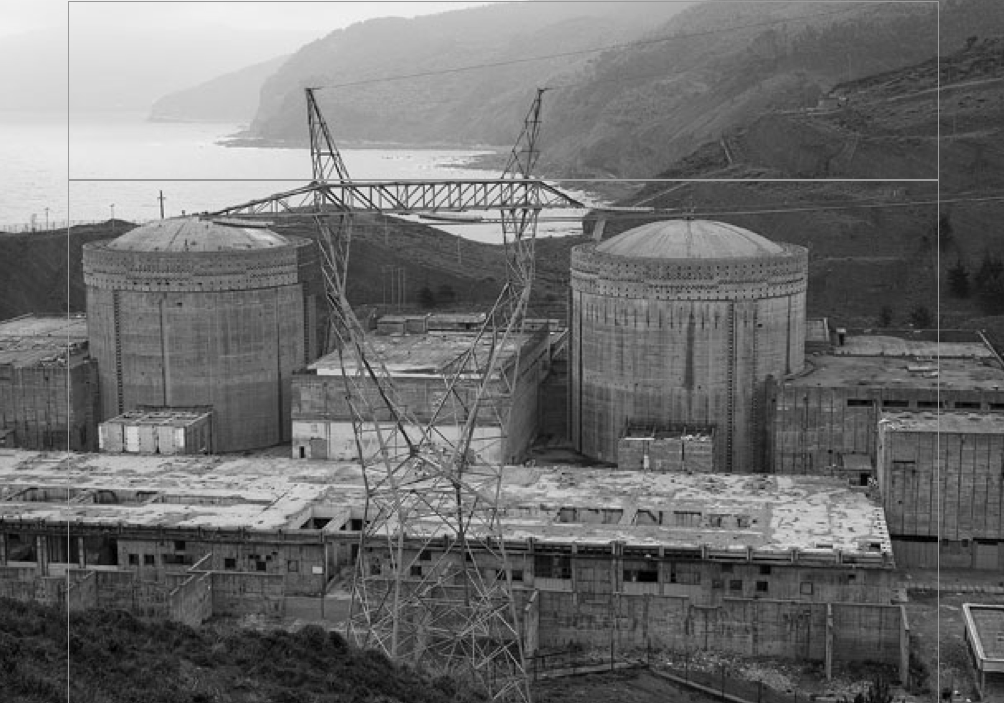
Construction of this huge facility was nearly complete when, 28 years ago, Spain's nuclear power expansion program was abruptly cancelled following a change of government. The Lemoniz plant was never commissioned. Since then, several propositions have been made to reconvert the place for other uses - but none has taken off.
Bingo! I thought. This could be the perfect next icon for the Basque Country. I could see the headline: "Lemoniz: from Nuclear Energy to Social Energy".
It could become a year-round showcase and hub for the multitude of projects that are out there in the territory, only invisibly so: productive urban gardens; low energy food storage; communal composting solutions; re-discovery of hidden rivers; neighbourhood energy dashboards; de-motorised courier services; software tools to help people share resources.
Now all I need is to persuade the nice Mr Galán, who owns the Lemoniz site that, now his Iberdrola Tower is more-or-less complete, this should be his next sustainable innovation project.
Wednesday, March 09. 2011
Situationist [iPhone]
Situationist is an iPhone app that attempts to make your everyday life more experimental and unpredictable. Inspired by the Situationist International of the 50′s, who advocated experiences of life being alternative to those admitted by the capitalist order, for the fulfillment of human primitive desires and the pursuing of a superior passional quality, the app takes on the “situation” element of the movement, attempting to create random rendezvous and interactions with strangers to induce the unpredictable.
Using the iPhone and it’s geolocation features, the app alerts members to each other’s proximity and gets them to interact in random “situations”. These situations vary from the friendly “Hug me for 5 seconds exactly” or “Compliment me on my haircut”, to the subversive eg “Help me rouse everyone around us into revolutionary fervour and storm the nearest TV station”. Members simply upload their photo and pick the situations they want to happen to them from a shortlist, in the knowledge that they might then occur anywhere, and at any time.
Situationist was created by Ben Carey and Henrik Delehag aka Benrik.
Benrik’s mission is to remodel the current world into something more to their liking, adding idea by idea to the sum total of radical thinking and inspiration. They work across all forms of cultural production, looking for cracks, openings and other loopholes.
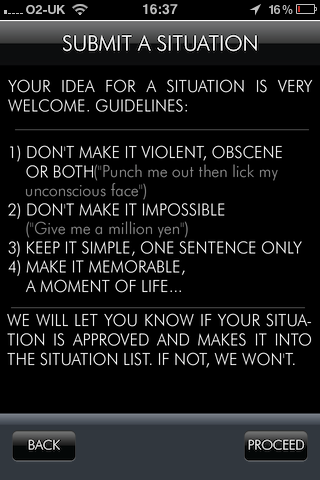
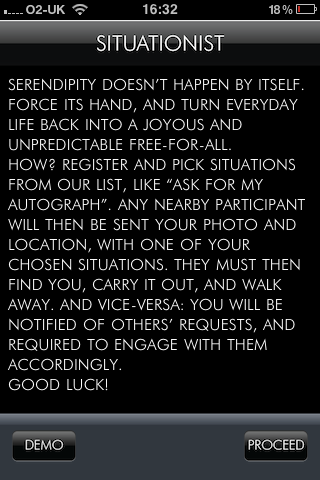
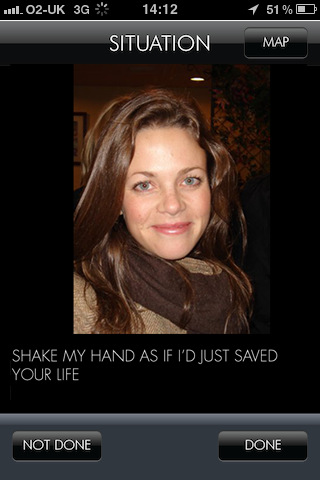
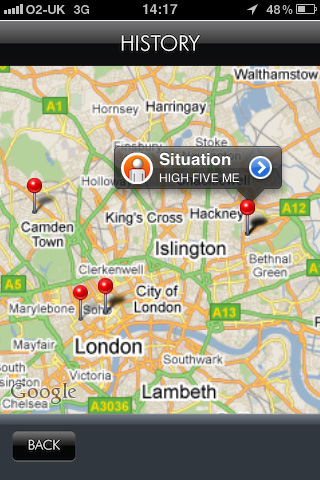
Related Links:
Monday, August 16. 2010
Giant Shout-Out to Ayn Rand Scrawled on Google Earth via GPS
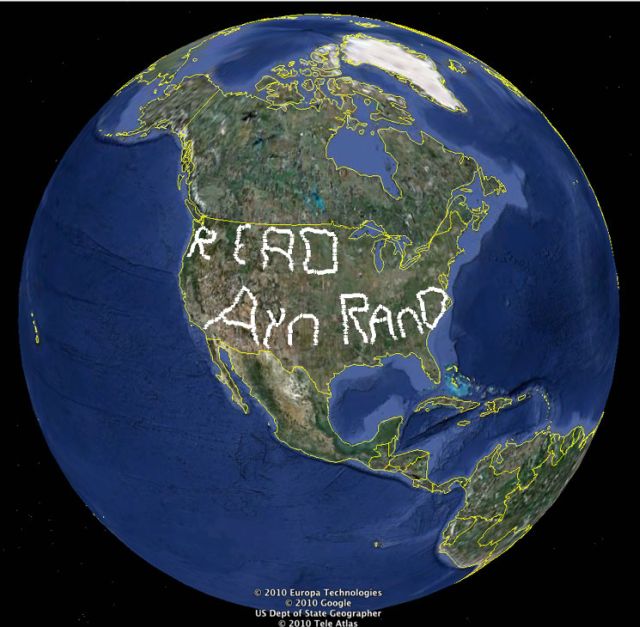
Ayn Rand is getting some pretty heavy endorsement via GPS of late, as one man — Nick Newcomen — recently drove 12,328 miles across 30 American states to scrawl “Read Ayn Rand” via GPS data inputted into Google Earth.
Newcomen — who explained to Wired that he undertook this mission simply because he is a Rand fan — took more than 30 days to execute this task, using a GPS logger (Qstarz BT-Q1000X) to create the letters. He started in Marshall, Texas, where he began writing out “Rand,” and then drove on (turning off the GPS whilst not writing) until the entire, “Reading Is Fundamental” sentiment was complete.
You can check out more info on the site World’s Biggest Writing, which also features David Lynchian videos of locations Newcomen visited, most ending with a shot of his almost expressionless face (see below).
Although we understand that Newcomen is passionate about the famed Atlas Shrugged author (we’re all groupies of someone, amirite?) we can’t help but wonder what Rand herself would have thought of the stunt. After all, part of Objectivism, a philosophical system she developed, states: “Man—every man—is an end in himself, not the means to the ends of others. He must exist for his own sake, neither sacrificing himself to others nor sacrificing others to himself. The pursuit of his own rational self-interest and of his own happiness is the highest moral purpose of his life.”
To that end, perhaps Newcomen should have scrawled his own name across the States — but, you know, whatever floats your fountainhead…
Personal comment:
If it happens to be true, and it looks like, we just found yet another crazy (gps) person... Welcome Nick Newcomen!
Tuesday, July 13. 2010
Crossroads by Garvin Nolte
Via NOTCOT
---
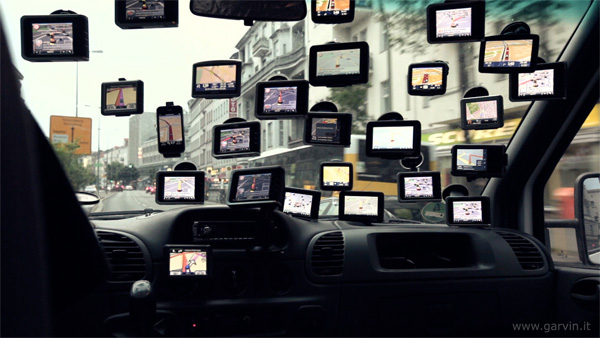
Crossroads by Garvin Nolte “The video installation “crossroads (what to do)” deals with the influence of others onto one’s own path of life in an abstract way.” Ever feel like everyone is pulling you in so many different directions? or telling you where to go and what to do? Is your technology dictating your life… literally? Lovely video/installation piece!
fabric | rblg
This blog is the survey website of fabric | ch - studio for architecture, interaction and research.
We curate and reblog articles, researches, writings, exhibitions and projects that we notice and find interesting during our everyday practice and readings.
Most articles concern the intertwined fields of architecture, territory, art, interaction design, thinking and science. From time to time, we also publish documentation about our own work and research, immersed among these related resources and inspirations.
This website is used by fabric | ch as archive, references and resources. It is shared with all those interested in the same topics as we are, in the hope that they will also find valuable references and content in it.
Quicksearch
Categories
Calendar
|
|
July '25 | |||||
| Mon | Tue | Wed | Thu | Fri | Sat | Sun |
| 1 | 2 | 3 | 4 | 5 | 6 | |
| 7 | 8 | 9 | 10 | 11 | 12 | 13 |
| 14 | 15 | 16 | 17 | 18 | 19 | 20 |
| 21 | 22 | 23 | 24 | 25 | 26 | 27 |
| 28 | 29 | 30 | 31 | |||
